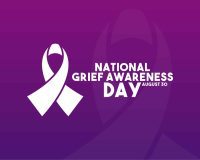The desire for quality end-of-life care for those with terminal diagnosis has been garnering serious attention for patients and families that are looking to spend less time in hospitals and clinical settings and more time at home in familiar surroundings. So why is it that only about one-third of Americans who are terminally ill, take advantage of a care that is not only paid for by Medicare but provides high-quality at home care?
According to Dr. Gail Gazelle, assistant clinical professor at Harvard Medical School. “Far too often, patients end up in an ICU, rushed to the emergency room, and they end up dying there, when really they would much rather have died in their own home,” she added. Many of these patients avoid hospice, because they (and often their doctors) believe end-of-life care means they have “failed” in the face of disease. “They often view it as, ‘OK, someone is telling me to crawl into my bed and die,'” she said. In reality, many hospice patients lead full, mobile and high-quality lives for months, Gazelle said.
Despite the efforts of Medicare and many hospice organizations, educating patients on their choices, which include hospice, is a conversation that needs to begin with the doctor, but if the doctor isn’t a fan, then it’s up to the patients to educate themselves. Though there is a lot of information available, there are still many myths surrounding hospice care. Here are the top 10 hospice myths exposed.

Myth 1: Hospice is a place.
Hospice is not a place but a philosophy of care. Wherever a patient calls home is where hospice care is provided: residence, assisted living facility, nursing home, inpatient facility (hospice house) or hospital. Hospice care involves a team-oriented approach to expert medical care, pain management, and emotional and spiritual support expressly tailored to the patient’s needs and wishes. Support is provided to the patient’s loved ones as well. Counseling and support is made available to caregivers and can last for months after the patient’s death.
Myth 2: Hospice patients cannot live longer than six months.
Once an individual becomes a patient he or she continues to receive services for as long as they are required. Hospice services are not discontinued unless they are no longer necessary or appropriate, or the patient chooses to stop them. If a patient makes this decision, a revocation form is signed. If the patient lives longer than 6 months, he or she can still get hospice care, as long as the hospice medical director or other hospice doctor re-certifies that the patient is terminally ill.
Myth 3: Hospice care is only for people with cancer or those who are bedridden or very ill.
Although many patients do have cancer, many hospices serve terminally ill patients of all ages, with all types of progressive and chronic diseases. According to the National Hospice and Palliative Care Organization, about 40 percent of U.S. hospice admissions now involve patients with end-stage heart disease, dementia, lung disease or stroke. Many of patients are able to enjoy life as much as they did before their diagnoses. This fact is especially true if care is accessed early in their illness. Patients are seen by trained healthcare professionals who can address their medical conditions and support family members. Additionally, hospice care can include complementary therapy such as pet visits.
Myth 4: Hospice care is expensive.
Not so for the patient. Medicare, Medicaid and most other insurances cover the cost of hospice care. The requirements for Medicare to cover hospice is that your loved one must be eligible for Medicare Part A (Hospital Insurance) and a doctor and the hospice medical director must certify that your loved one is terminally ill with a prognosis of 6 months or less if the disease runs its normal course. Care must be provided by a Medicare-approved hospice provider. Hospice care is actually less expensive than care provided in a traditional medical setting.
Myth 5: Hospice is for patients who do not need a high level of care.
False. End-of-life care is extremely complex. The hospice team is composed of specially trained physicians, pharmacists, nurses and therapists who can provide comprehensive medical care. Their efforts are complemented by a team of other trained professionals and volunteers who offer a full range of support services, which help the entire family.
Myth 6: Hospice patients require a “Do Not Resuscitate” status prior to admission.
It depends on the hospice. While requiring a Do Not Resuscitate (DNR) order before admittance is required by some hospices, Medicare-certified hospices do not require a DNR order, since it is understood by the patient and family that the patient will be receiving palliative, not curative, care.
Myth 7: Hospice requires family members to provide care to patients.
False. Every hospice patient has access to a hospice volunteer, registered nurse, social worker, home health aide, and chaplain (also known as the interdisciplinary team). Team members visit patients and families wherever they call home and are available 24/7 for support and care.
If needed, home health aides, who provide personal care to the patient, will visit most frequently. For each patient and family, the interdisciplinary team writes a care plan with the patient/family that is used to make sure the patient and family receive the care they need from the team.
All visits, however, are based on the patient and family needs as described in the care plan and the condition of the patient during the course of illness. The frequency of volunteers and spiritual care is often dependent upon the family request and the availability of these services. Travel requirements and other factors may cause some variation in how many patients each hospice staff serves.
Myth 8: Hospice means “nothing more can be done.”
False. When a cure is no longer an option, there is still a great deal that can be done to control symptoms, and provide care, comfort and support. The hospice interdisciplinary team includes nurses, physicians, hospice aides, social workers, chaplains, bereavement counselors and trained volunteers. Hospice care is the model of high-quality, compassionate care that helps patients and families live as fully as possible.
Myth 9: Hospice is just for the patient.
False. Hospice care focuses on the patient, of course, but also on those affected by his or her illness and on providing comfort, dignity and emotional support to the patient and their loved ones. Quality of life for all concerned is our highest priority.
Myth 10: Once you go to hospice, you can’t change your mind or seek a cure.
Hospice patients always have the right to return to medical care that focuses on curing their disease at any time and for any reason. If a condition improves or the disease goes into remission, a patient can be discharged from hospice and go back to aggressive, curative measures. This is all based on patient choice. If a discharged patient wants to return to hospice care at a later date, Medicare, Medicaid and most private insurance companies will allow readmission.
Gail Gazelle, M.D., assistant clinical professor, Harvard Medical School, and president, MD Can Help, Boston; Alexi Wright, M.D., fellow, hematology/oncology, Dana-Farber Cancer Institute, Boston; July 26, 2007, New England Journal of Medicine
http://abcnews.go.com/Health/Healthday/story?id=4508069&page=1
https://www.nhpco.org/about-hospice-and-palliative-care/hospice-faqs





1 Comment
This a great post , finally I got to the actual difference between hospice care and palliative care, Very well done and all these top myths about hospice.